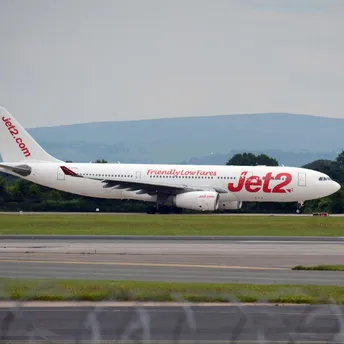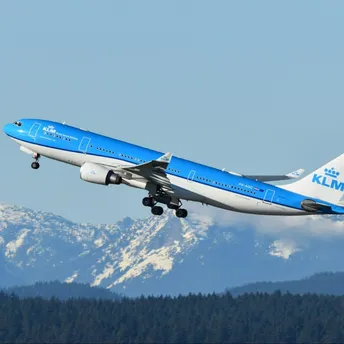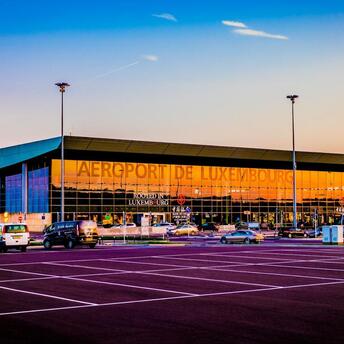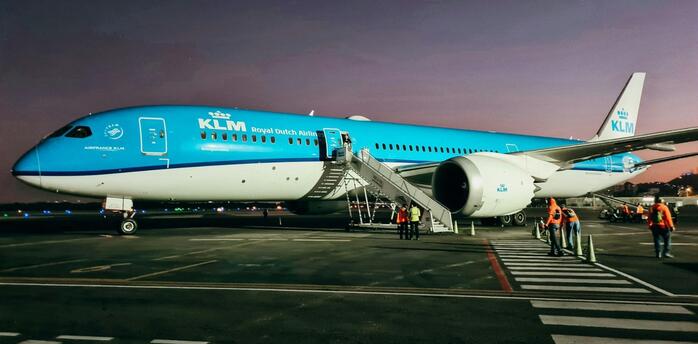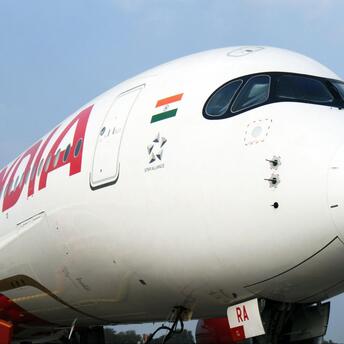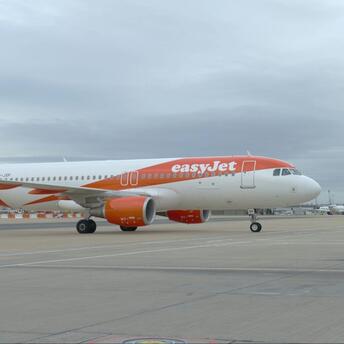Top 10 largest airports in the world: major international air transportation hubs by number of passengers and land area
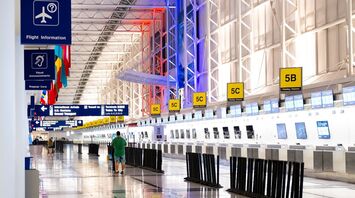
Together with the development of tourism and technological advances, airports have become the world's central transportation hubs. Travelers are becoming more numerous every year, new routes are emerging, and airports are updating their features, services and size. What are the largest airports in the world? Let's take a look at the most impressive ones in terms of their area and passenger traffic to determine the top 10 largest airports in the world.
Which airports are considered the largest in the world?

If we judge by passenger traffic, i.e. the number of passengers served, the top 10 largest airports in the world look like this.
The first place is occupied by Hartsfield-Jackson Atlanta International Airport (USA), serving 107.39 million passengers per year. It is followed by Beijing Shoudou International Airport (China) with a passenger flow of 96.51 million passengers per year. Rounding out the top three is Dubai International Airport (UAE) with 88.21 million passengers. Los Angeles International Airport in the United States (87.53 million) and Tokyo Haneda Airport in Japan (85.41 million) are slightly behind it.
The remaining places in the top ten largest airports in the world by passenger traffic are: O'Hare International Airport (USA); Heathrow Airport in London (UK), Shanghai Pudong International Airport (China), Hong Kong International Airport (Hong Kong) and Paris Charles de Gaulle Airport (France).
Which airport is considered the largest in the world?
Passenger traffic at Hartsfield-Jackson Atlanta International Airport in the United States exceeds 197 million passengers per year. This gives it the top spot in the category of busiest airports in the world. It also surpasses many of its competitors in terms of area. It is 4,700 hectares (about 7 square miles).
Which airport has the largest area?
The title of the largest airport by area in the world belongs to King Fahd International Airport (KFIA), which is located in Saudi Arabia. Its area of more than 789 square kilometers surpasses its nearest competitor by almost 10 times. It is located in the east of Dammam city and is also known as Dammam World Airport (DWC). Its size almost matches the area of all 5 boroughs of New York City, and the facilities placed on it include a mosque that can accommodate up to 2,000 people at a time, an apartment complex for three thousand people, and greenhouses whose plants are used for landscaping.
Despite its impressive size, it is not even among the world's top 100 airports in terms of passenger traffic: it receives only about 9.7 million passengers per year. In Saudi Arabia, it is the third busiest, and the palm of superiority with a passenger traffic of 41 million passengers annually holds the King Abdulaziz International Airport, located in Jeddah.
Which airport is the largest in Europe?
Among European airports, the title of the largest belongs to Istanbul Airport (IST). It is located on the European side of the city and handles more than 71 million passengers annually, making it the busiest in Europe and putting it ahead of London Heathrow (LHR).
A brief overview of the largest airports in the world
One of the key factors that can be used to determine the size of an airport, in addition to floor space, is passenger traffic, or the number of passengers. Airports Council International (ACI) closely tracks the number of people served at airports around the world, which allows it to determine trends in global air travel. According to its statistics, the top spot in the ranking of the ten largest airports in the world is occupied, as we have already stipulated, by Hartsfield-Jackson Atlanta International Airport. The U.S. confidently dominates the list of the world's busiest airports.
1. Hartsfield-Jackson Atlanta International Airport, USA
One of the largest and most famous airports in the world consists of 7 terminals. Their total area is over 13 square kilometers. From it, you can travel to five continents without a transfer. The territory hosts hundreds of cafes, restaurants, bars, entertainment and shopping establishments. It takes the first place in the list of the busiest airports every year since 1998, apart from one exception. The fact is that in 2020, Hartsfield-Jackson Airport was relegated to second place because of COVID-19, and the leader in passenger traffic during that period was Guangzhou Baiyun Airport in China.
2. Dallas Fort Worth International Airport, USA
This airport is spread across two counties due to its size. More than 62.5 million passengers are served here annually. Dallas Fort Worth International Airport (DFW) has an area of more than 17 square kilometers, which houses four terminals. It is also the largest hub of American Airlines.
3. Denver International Airport, USA
One of the largest and busiest airports in the world has an area of more than 54 square kilometers. Denver International Airport's (DEN) seven terminals handle over 58.8 million passengers per year. It generates over $26 billion dollars annually for the Colorado region.
4. O'Hare International Airport, USA
O'Hare International Airport (ORD) has an area of more than 18 square kilometers. It has four terminals and carries more than 54 million passengers through them annually. The airport is located northwest of Chicago, Illinois, and is one of the major transportation hubs in the United States.
5. Los Angeles International Airport, USA

A regular contributor to the top of the world's largest airports, Los Angeles International Airport (LAX) has an annual passenger traffic of 48 million passengers. It covers an area of approximately 21 square kilometers and is home to nine terminals. It is located along the west coast of the United States, being a gateway for international destinations, particularly to Asia and the Pacific.
6. Charlotte Douglas International Airport, United States
The airport in Charlotte, North Carolina has nonstop service to many regions and cities within the United States and around the world. It serves more than 43.3 million passengers annually and has five terminals within its 5 square kilometers.
7. Orlando International Airport, USA
This airport is located in central Florida. Its passenger traffic level is more than 40.3 million passengers. The area accommodates many boutiques, duty-free stores, restaurants and VIP facilities.
8. Guangzhou Baiyun International Airport, China
Located in China's Guangdong Province, the international airport provides air service to cities not only in China but also around the world. It receives more than 40.2 million passengers per year.
9. Chengdu Shuangliu International Airport, China
One of the largest airports in China is characterized by state-of-the-art equipment and serves over 40.1 million passengers annually.
10. Harry Reid International Airport, USA
This airport is located in the city of Las Vegas and receives more than 39.7 million passengers annually.
Airports with the largest area in the world
The size of an airport can be determined not only by the volume of operation, but also by other parameters, such as the size of its territory. The top ten largest airports by area in the world are: King Fahdi International Airport (Saudi Arabia); two Chinese international airports, Chengdu Tianfu and Shanghai Pudong; Denver, Dallas/Fort Worth, Orlando, Washington Dulles and Houston Intercontinental George Bush International Airports (USA); Cairo International Airport in Egypt and Suvarnabhumi International Airport (Thailand).
These airports are so large that exploring their terminals is like exploring small towns. They provide state-of-the-art services and amenities designed to improve passenger comfort and enhance the experience for travelers. Huge airports are designed to meet the growing demand for air travel, and traveling through them provides an extraordinary experience designed to showcase the evolution of modern air travel.
Which airport is the smallest in the world?
To emphasize just how big the airports on our list of the largest airports in terms of area and passenger traffic are, it's worth comparing them to the smallest airport. That status belongs to Juancho E. Irauskin Airport in Saba, Caribbean Netherlands. It is only 1,312 feet long.
Europe's largest airports

Since the lifting of restrictions due to the pandemic, airports in Europe have experienced a boom with travel numbers increasing exponentially, showing a recovery towards pre-pandemic values.
Currently, the largest airport in Europe is Istanbul Airport, which ousted London Heathrow from its pedestal of honor in 2019. It remains king among the largest European airports, followed, in addition to Heathrow, by Charles de Gaulle airport in Paris, Schiphol in Amsterdam and Frankfurt, closing the top European top five. This top 5 handles almost half of all passenger traffic in Europe.
The bottom line
The world of air travel has changed significantly since 2020. The pandemic has contributed to the growth of global passenger traffic in the US and China, as both countries have large populations and vast areas to travel. This has contributed to an increase in domestic air travel, as international travel has been significantly limited. Plus, both countries are among the most important destinations for business travel. But European countries have been working hard to make up for lost ground in order to regain their position over the next few years.
According to Airports Council International statistics, the number of air passengers reached a value of almost 8.5 billion last year, exceeding the 2019 figures by 94%. Some airlines have shown a more superior ability to recover from the Covid-19 bans than others, and the busiest international airports emphasize that popular destinations are mostly unchanged.



